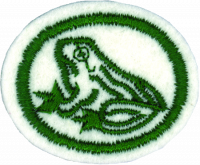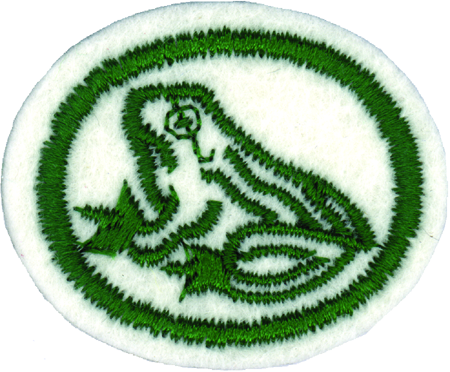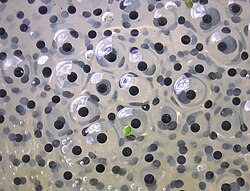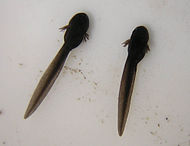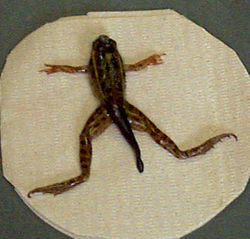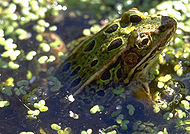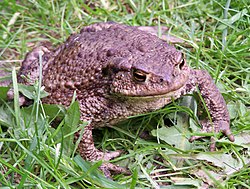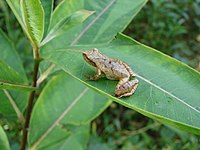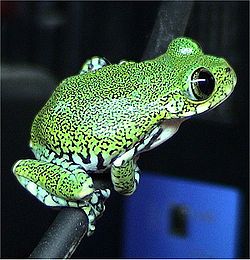Difference between revisions of "AY Honors/Amphibians/Answer Key/uk"
(Created page with "</noinclude> <!-- 3. Чим відрізняються одна від одної жаба та ропуха? --> Використання загальних назв «жаб...") |
(Created page with "{{clear}}") |
||
| Line 79: | Line 79: | ||
{{clear}} | {{clear}} | ||
| − | + | {{clear}} | |
| − | {{ | ||
| − | |||
| − | |||
| − | |||
| − | |||
| − | |||
| − | }} | ||
| − | |||
| − | + | {{clear}} | |
| − | {{ | ||
| − | |||
| − | |||
| − | |||
| − | |||
| − | |||
| − | }} | ||
| − | |||
| − | |||
| − | |||
<noinclude></noinclude> | <noinclude></noinclude> | ||
| Line 119: | Line 101: | ||
</div> | </div> | ||
| − | + | {{clear}} | |
| − | |||
| − | |||
| − | + | {{clear}} | |
| − | |||
| − | |||
| − | + | {{clear}} | |
| − | |||
| − | |||
| − | + | {{clear}} | |
| − | |||
| − | |||
<noinclude></noinclude> | <noinclude></noinclude> | ||
| Line 163: | Line 137: | ||
</div> | </div> | ||
| − | + | {{clear}} | |
| − | |||
| − | |||
| − | |||
<noinclude></noinclude> | <noinclude></noinclude> | ||
| Line 177: | Line 148: | ||
</div> | </div> | ||
| − | + | {{clear}} | |
| − | |||
| − | |||
<noinclude></noinclude> | <noinclude></noinclude> | ||
| Line 189: | Line 158: | ||
</div> | </div> | ||
| − | + | {{clear}} | |
| − | |||
| − | |||
<noinclude></noinclude> | <noinclude></noinclude> | ||
| Line 202: | Line 169: | ||
<noinclude></noinclude> | <noinclude></noinclude> | ||
| − | + | {{clear}} | |
| − | |||
| − | |||
| − | + | {{clear}} | |
| − | |||
| − | |||
<div lang="en" dir="ltr" class="mw-content-ltr"> | <div lang="en" dir="ltr" class="mw-content-ltr"> | ||
Revision as of 22:02, 21 March 2025
Земноводні належать до холоднокровних тварин. Земноводні, або амфібії, у дорослому стані здебільшого поширені на суходолі, проте їхнє розмноження і розвиток відбуваються у воді. Шкіра земноводних гола, позбавлена рогових або кісткових лусок, багата на слизові залози, секрет яких (слиз) забезпечує зволоження поверхні тіла і захист від проникнення хвороботворних мікроорганізмів та нападу хижаків. Дихають земноводні за допомогою легенів та через шкіру. Мають трикамерне серце та два кола кровообігу.
Земноводні нараховують близько 4 000 сучасних видів (в Україні - 17), які об'єднані у три ряди; ми розглянемо два з них - Хвостаті та Безхвості амфібії.
Представникам ряду Безхвості (жаби і ропухи) характерні довгі задні лапи, коротке тіло, перетинчасті пальці, витріщені очі та відсутність хвоста. Більшість із них ведуть напівводяний спосіб життя, але легко пересуваються по суші, стрибаючи чи лізучи. Зазвичай вони відкладають яйця в калюжі, ставку або озері; а їхні личинки, звані пуголовками, мають зябра і розвиваються у воді.
Представники ряду Хвостаті мають струнке тіло, короткі лапи та довгий хвіст. Волога шкіра земноводних дозволяє їм мешкати біля водойми або у вологому середовищі під деяким захистом. Деякі види живуть у воді протягом усього життя, інші періодично виходять з води. Є й такі, що у дорослому стані повністю наземні. Саламандри зовні нагадують ящірок, але їх легко відрізнити за відсутністю луски. Вони здатні регенерувати втрачені кінцівки.
Використання загальних назв «жаба» та «ропуха» не має таксономічного обґрунтування. З таксономічної точки зору всі представники ряду Безхвості є жабами, але тільки представники сімейства Bufonidae вважаються справжніми жабами. Використання терміну «жаба» у загальних назвах зазвичай відноситься до водних або напівводних видів з гладкою або вологою шкірою, а термін «ропуха» зазвичай відноситься до видів, які мають тенденцію бути наземними із сухою, бородавчастою шкірою. Виняток становить вогнебрюха жаба (Bombina bombina): хоча її шкіра злегка бородавчаста, вона віддає перевагу водному середовищу проживання.
Першочерговим захистом для земноводних служить їх здатність бути не помітними для потенційного хижака. Невеликий розмір і забарвлення багатьох видів допомагають у цьому відношенні. Але іноді, замість того, щоб зливатися з навколишнім середовищем, жаби мають дуже яскраве забарвлення. Забарвлення в даному випадку служить попередженням, адже ці жаби отруйні.
Багато жаб виділяють слабкі токсини, які роблять їх неприємними для потенційних хижаків. Наприклад, у всіх ропух є великі отруйні привушні залози, розташовані за очима на маківці. Деякі види жаб особливо токсичні.
Саламандри мають здатність довільно від’єднувати хвости. Коли хижак хапає саламандру за хвіст, вона відкидає хвоста і втікає. Хвіст з часом відростає.
Frogs
The life cycle of frogs, like that of other amphibians, consists of four main stages: egg, tadpole, metamorphosis and adult. The reliance of frogs on an aquatic environment for the egg and tadpole stages gives rise to a variety of breeding behaviors that include the well-known mating calls used by the males of most species to attract females to the bodies of water that they have chosen for breeding. Some frogs also look after their eggs—and in some cases even the tadpoles—for some time after laying.
The life cycle of a frog starts with an egg. Eggs are generally laid in water, and an individual female may lay egg masses containing thousands of eggs. While the length of the egg stage depends on the species and environmental conditions, aquatic eggs generally hatch within one week.
Some frogs do not have the tadpole stage going from egg to adult shape e.g. New Zealand's native frogs (pepeketua) belong to the genus Leiopelma. Eggs hatch and continue life as tadpoles (occasionally known as polliwogs). Tadpoles are aquatic, lack front and hind legs, and have gills for breathing and tails with fins for swimming. Tadpoles are typically herbivorous, feeding mostly on algae, including diatoms that are filtered from the water through the gills. Some species are carnivorous at the tadpole stage, eating insects, smaller tadpoles and fish. The tadpole stage may be as short as a week, or tadpoles may overwinter and metamorphosis the following year in some species, such as the Midwife toad (Alytes obstetricans) and the Common Spadefoot (Pelobates fuscus).
At the end of the tadpole stage, frogs undergo metamorphosis, in which they transition into adult form. Metamorphosis involves a dramatic transformation of body shape and function, as tadpoles develop hind legs and then front legs, lose their gills and develop lungs. Their intestines shorten as they shift from an herbivorous to a carnivorous diet. The final stage of development from froglet to adult frog involves the loss of the tail.
After metamorphosis, young adults may leave the water and disperse into terrestrial habitats, or continue to live in the aquatic habitat as adults. Almost all species of frogs are carnivores as adults, eating invertebrates such as spiders, insects, snails, and slugs. A few of the larger species may eat prey such as small mammals, fish and smaller frogs. Some frogs use their sticky tongues to catch fast-moving prey, while others capture their prey and force it into their mouths with their hands. However, there are a very few species of frogs that primarily eat plants. Adult frogs are themselves preyed upon by birds, large fish, snakes, otters, foxes, badgers, coatis, and other animals.
Amphibians are insect eaters, so they are very valuable for controlling mosquito populations. They are also the preferred dinner for several mammal, bird, fish, and reptile species.
Toads burrow below the frost line and hibernate for the winter. Plant matter actually generates a bit of heat as it decays, so toads prefer areas with plenty of leaf litter and fallen logs.
Here are the calls of three frogs.
| File:Bufo bufo call1.ogg | File:Pseudacris-crucifer-002.ogg | File:Leptopelis vermiculatus call.ogg |
Frogs call by passing air through the larynx in the throat. In most calling frogs, the sound is amplified by one or more vocal sacs, membranes of skin under the throat or on the corner of the mouth that bulge out during the amplification of the call.
The USGS publication further states, "To prevent the spread of disease to native populations, any frogs or salamanders you raise should not be released back into the environment. Lab-raised amphibians can be anesthetized and euthanized with benzocaine or tricaine methanesulfonate (MS 222, Green 2001). If you anticipate difficulty complying with this guidance, you should not undertake raising larvae in captivity."
